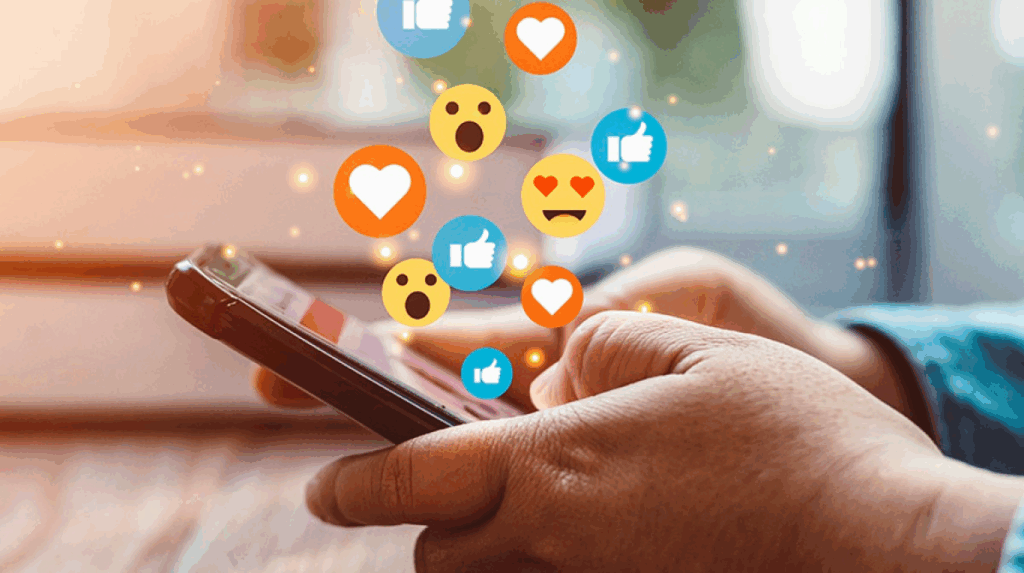Anúncios
Social media has become an essential part of modern life, reshaping the way we communicate, consume information, and entertain ourselves.
Platforms like Instagram, TikTok, and YouTube have grown beyond their initial purposes, transforming into powerful tools for building communities, sharing knowledge, and driving global trends.
Anúncios
In this post, we’ll explore how these platforms have revolutionized not only the way we stay connected but also how they influence cultural movements and create new opportunities for creators and businesses.
From short-form videos to long-form storytelling, these networks cater to diverse audiences, making them key players in the digital age.
Anúncios
Additionally, we’ll examine their role in spreading information, highlighting both the opportunities and challenges of relying on these platforms as sources of news and insights.
By understanding their impact, it’s easier to navigate the fast-paced and ever-evolving landscape of social media while uncovering strategies to use them effectively for personal and professional growth.
The Transformative Role of Instagram, TikTok, and YouTube in Modern Information Consumption
Revolutionizing How Information Is Shared and Consumed
Social media platforms like Instagram, TikTok, and YouTube have redefined how information is disseminated and consumed in the digital age. These platforms, originally designed for entertainment and social interaction, have evolved into powerful tools for sharing news, spreading awareness, and even educating audiences.
Unlike traditional media outlets that rely on centralized control and rigid content creation structures, these platforms empower individuals to become content creators, fostering decentralized information ecosystems.
Instagram, for instance, has revolutionized the use of visual storytelling. Its integration of infographics, carousel posts, and live streams allows users to communicate complex information in an easily digestible format. TikTok, on the other hand, excels in brevity, using short, engaging videos to convey messages quickly.
This format aligns with the decreasing attention spans of modern audiences, making it particularly effective for quick updates, tutorials, and even breaking news.
Meanwhile, YouTube offers a more long-form and in-depth approach, with creators producing detailed analyses, investigative reports, and educational content.
One of the most striking aspects of these platforms is their ability to cater to diverse audiences. Algorithms personalize content, ensuring users receive information tailored to their preferences and interests. While this enhances engagement, it also raises critical questions about echo chambers and the potential for misinformation.
Nonetheless, their role in democratizing information cannot be understated. The barrier to entry for sharing content is minimal, allowing marginalized voices to share their perspectives and reach global audiences.
The Shift from Traditional News Sources
Historically, newspapers, radio, and television dominated the dissemination of news and information. These mediums, however, were often criticized for their lack of interactivity and slow pace in adapting to changing consumer behaviors. With the rise of Instagram, TikTok, and YouTube, the narrative has shifted.
These platforms have not only sped up the flow of information but also enabled real-time interactions between content creators and their audiences.
For instance, during crises or breaking news events, platforms like Twitter and Instagram serve as the go-to sources for updates. Citizen journalists equipped with smartphones can capture events as they unfold, bypassing traditional media gatekeeping.
TikTok and YouTube further amplify these voices, providing spaces for deeper dives into current events, often from perspectives not covered by mainstream outlets.
Moreover, the interactivity of these platforms fosters a two-way dialogue. Users can comment, share, and even create response content, which transforms the once-passive act of consuming news into an active, participatory experience.
This has been particularly evident in grassroots movements and social justice campaigns, where hashtags, short videos, and user-generated content have played pivotal roles in raising awareness and driving action.
Building Communities in the Digital Sphere
The Role of Shared Interests in Connecting Users
One of the most powerful aspects of social media is its ability to connect people with shared interests, regardless of geographical boundaries. On Instagram, users can join niche communities through hashtags and follow accounts that align with their passions.
TikTok’s algorithm takes this a step further, curating a “For You Page” that consistently introduces users to content they’re likely to engage with. YouTube, meanwhile, offers channels and playlists that allow users to immerse themselves deeply into specific topics.
For example, mental health communities have flourished on Instagram, where therapists and advocates share resources, personal stories, and actionable advice. TikTok creators often address stigmatized topics, such as trauma recovery or neurodivergence, in a digestible and approachable way. YouTube provides a platform for long-form discussions and interviews, giving audiences the opportunity to explore these subjects in greater depth.
The communal aspect is not limited to niche interests. These platforms also foster a sense of belonging during global events. Whether it’s a live-streamed fundraiser on YouTube or a viral challenge on TikTok, users rally together, forming digital communities that often translate into real-world action.
However, the dynamics of online communities are not without challenges, such as the risks of groupthink, exclusionary practices, or harassment, which necessitate robust moderation and community guidelines.
Social Media as a Catalyst for Advocacy and Change
Instagram, TikTok, and YouTube have become indispensable tools for advocacy. Activists use these platforms to mobilize support, share resources, and educate their audiences on pressing social issues. The ability to share viral content quickly has been instrumental in spreading awareness about topics ranging from climate change to human rights violations.
TikTok, with its highly shareable short videos, has proven particularly effective in drawing attention to underrepresented causes. For instance, creators often break down complex issues into 60-second clips, making them accessible to a broad audience.
Instagram complements this approach with its visual storytelling capabilities, offering infographics, photo essays, and live discussions. YouTube serves as the medium for more in-depth explorations, featuring documentaries, interviews, and educational series that dive into the nuances of various causes.
These platforms also democratize access to resources. Crowdfunding campaigns, petitions, and educational toolkits can be easily shared, enabling users to take immediate action. The global reach of these platforms means that advocacy efforts are no longer confined by geographical or cultural barriers.
However, the challenge remains in ensuring that the content shared is accurate and that activism doesn’t devolve into performative gestures devoid of real impact.
Entertainment in the Age of Social Media
The Evolving Landscape of Digital Entertainment
The entertainment industry has undergone a seismic shift with the rise of Instagram, TikTok, and YouTube. Traditional forms of entertainment, such as television and cinema, are increasingly competing with user-generated content that is often more relatable and accessible.
These platforms have enabled a new generation of creators to bypass traditional gatekeepers and build their own audiences, reshaping the dynamics of the industry.
TikTok, for instance, has popularized a new genre of short-form, highly engaging content that spans dance, comedy, and educational videos. Instagram has transformed from a simple photo-sharing app to a hub for live performances, interactive stories, and reels.
YouTube, as the pioneer of user-generated video content, continues to dominate with its long-form videos, ranging from vlogs and tutorials to full-fledged web series.
What sets these platforms apart is their focus on audience engagement. Features like comments, likes, and shares create a sense of community, while live-streaming options allow creators to interact with their followers in real-time. The result is an entertainment experience that feels personal and participatory, unlike the one-sided nature of traditional media.
The Rise of Influencer Culture
Another significant development in the realm of entertainment is the rise of influencers, individuals who have amassed large followings and wield considerable sway over their audiences. Instagram, TikTok, and YouTube have become breeding grounds for this phenomenon, with influencers shaping trends, endorsing products, and even influencing public opinion.
These platforms have blurred the lines between entertainment and marketing. Influencers often create content that serves both purposes, seamlessly integrating sponsored products into their videos or posts. This has given rise to a multi-billion-dollar industry, with brands leveraging influencer partnerships to reach their target demographics more effectively.
However, the rise of influencer culture is not without its controversies. Issues such as authenticity, transparency, and the mental health impact of online fame are ongoing discussions. Nevertheless, influencers remain a testament to the transformative power of Instagram, TikTok, and YouTube in reshaping not just entertainment but also consumer behavior and societal norms.
Challenges and Ethical Considerations in a Hyperconnected World
The Dual-Edged Sword of Algorithm-Driven Content
While the algorithms powering Instagram, TikTok, and YouTube offer personalized and engaging user experiences, they also present a range of ethical and practical challenges. These algorithms are designed to maximize user engagement, often prioritizing sensational or polarizing content.
This has significant implications for the spread of misinformation and the reinforcement of echo chambers, where users are exposed primarily to viewpoints they already agree with.
Additionally, the addictive nature of these platforms, driven by algorithmic content loops, raises concerns about mental health and time management. Critics argue that the constant barrage of curated content can lead to unrealistic expectations, reduced attention spans, and an unhealthy dependency on external validation in the form of likes and comments.
Efforts are being made to address these issues, such as implementing content moderation policies and providing users with tools to manage their screen time. However, the responsibility also lies with users to critically evaluate the information they consume and to diversify their content sources to avoid algorithmic bias.
Data Privacy and Security Concerns
Another pressing issue is data privacy. Social media platforms collect vast amounts of user data to fuel their algorithms and monetize their services through targeted advertising. While this enables a highly personalized user experience, it also raises significant privacy concerns. Data breaches, unauthorized data sharing, and the lack of transparency in how data is used have eroded user trust in these platforms.
In response, there has been growing demand for stricter regulations and greater accountability. Governments worldwide are enacting data protection laws, such as GDPR in Europe, to give users more control over their personal information. Platforms themselves are introducing features like privacy dashboards and enhanced security settings to address these concerns.
However, achieving a balance between personalization and privacy remains a complex challenge in the ever-evolving landscape of social media.

Conclusion: The Transformative Power and Complexities of Instagram, TikTok, and YouTube
In the era of digital connectivity, Instagram, TikTok, and YouTube have become more than just platforms for entertainment—they are powerful tools for information dissemination, community building, and cultural influence. These platforms have revolutionized how we consume, share, and interact with content, offering users the ability to access diverse perspectives and participate actively in global conversations.
By democratizing content creation, they have amplified marginalized voices, fostered grassroots movements, and reshaped how advocacy is conducted. However, this unprecedented connectivity comes with challenges.
While the personalized experiences offered by algorithm-driven content enhance user engagement, they also contribute to echo chambers and the spread of misinformation.
Additionally, concerns around data privacy, ethical content moderation, and the mental health impact of prolonged usage highlight the dual-edged nature of these platforms. Addressing these challenges requires collaboration between platform creators, policymakers, and users to ensure a safer and more balanced digital experience.
Ultimately, Instagram, TikTok, and YouTube have not only redefined entertainment but have also become catalysts for social change, information sharing, and community building. As they continue to evolve, their ability to balance innovation with ethical responsibility will shape the future of the digital age, making them indispensable components of our modern social fabric.



